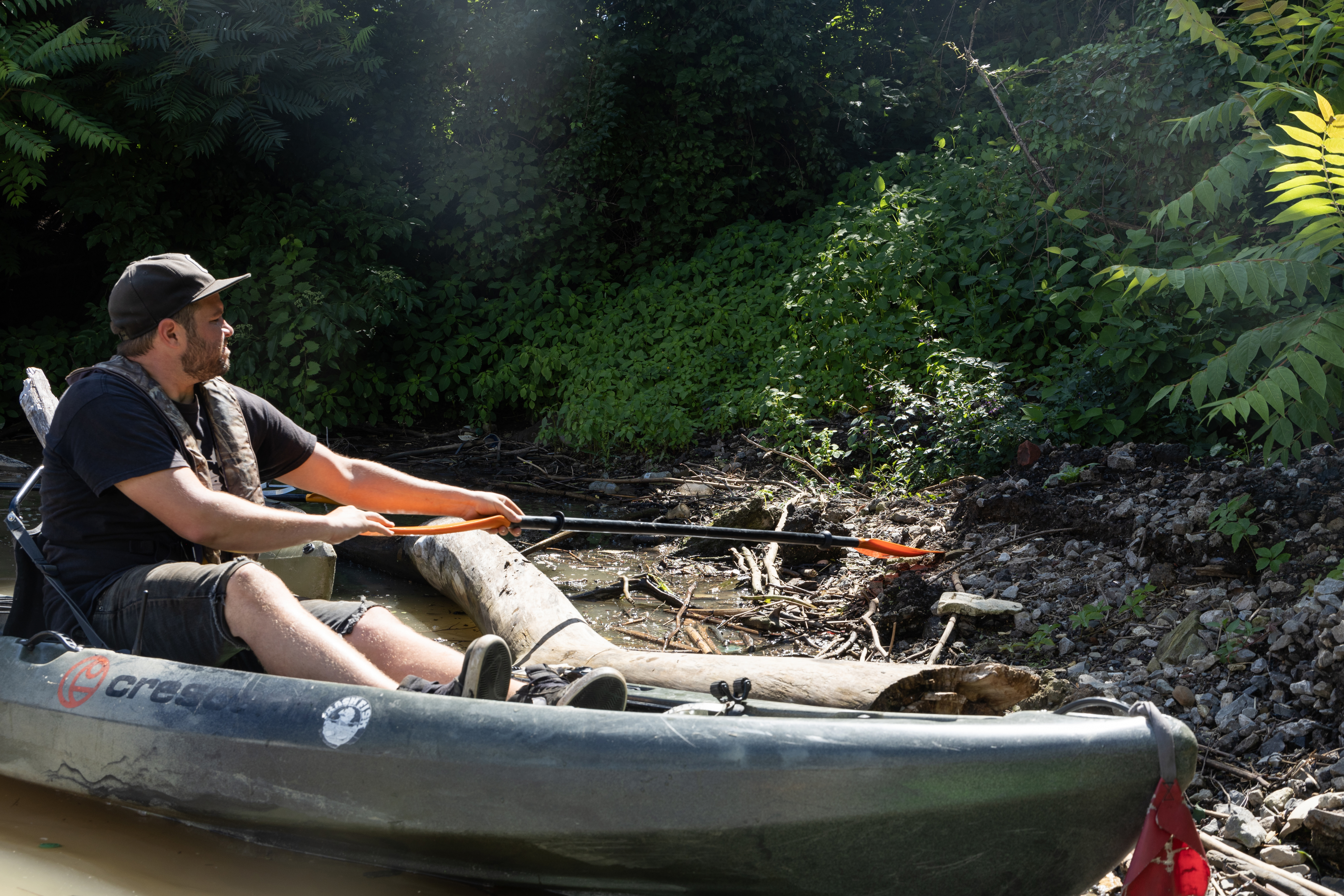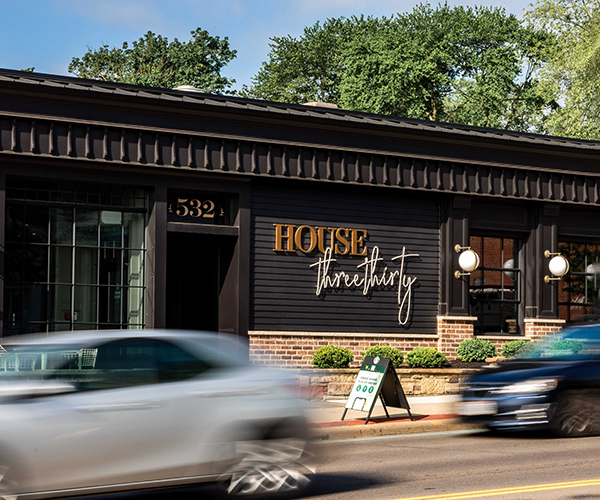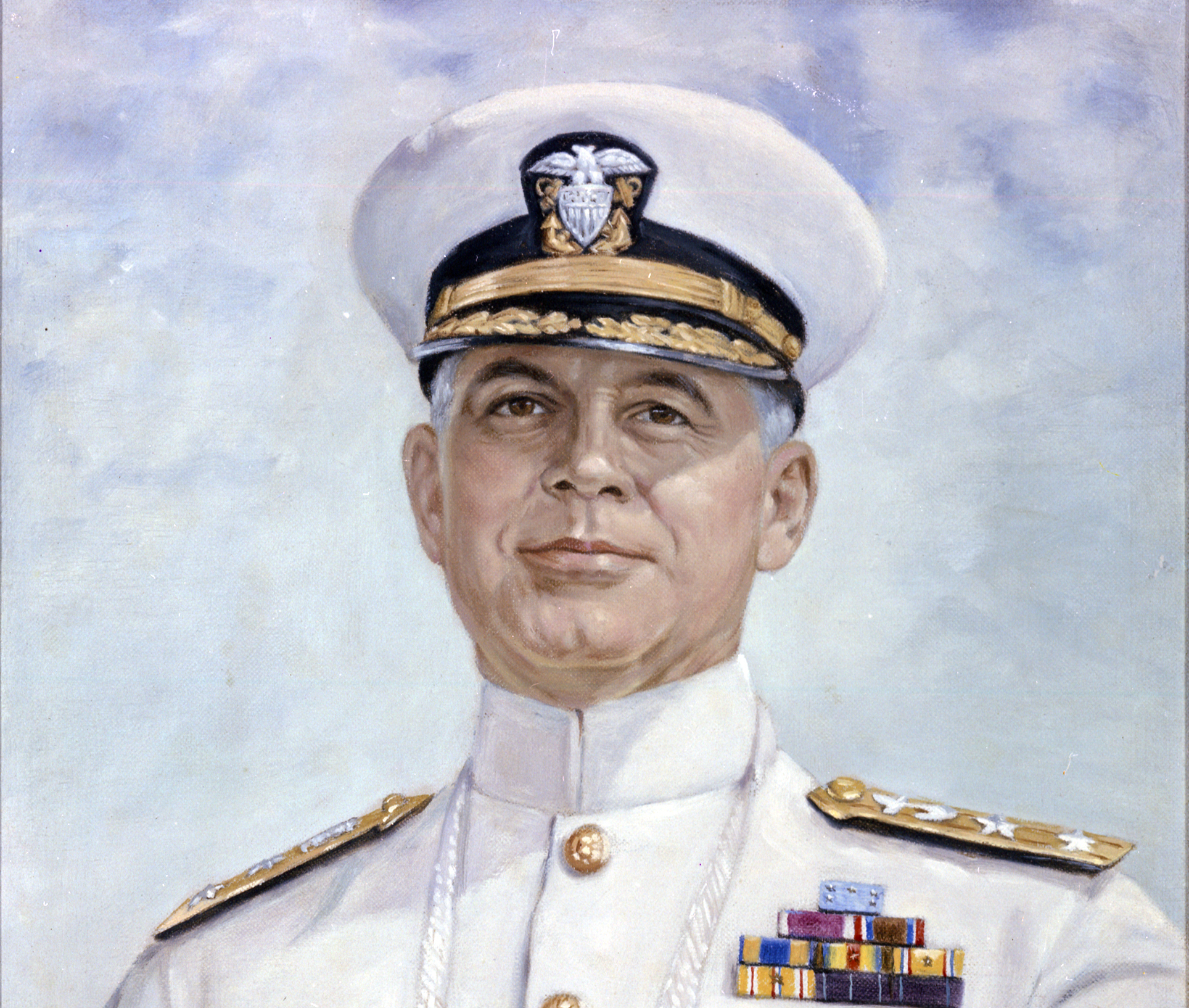The Great Blizzard Of 1978
by Sheehan Hannan | Jan. 11, 2021 | 1:00 PM

The Cleveland Press Collection, Cleveland State University, Cleveland Press Collection, Cleveland Public Library Photograph Collection
Here came the storm, flying across the vast whiteness of the frozen lake, mustering its cold and furious power toward that distant shoreline, shrieking, churning, hurling, whistling, whooping and swirling, until it whooshed into Joe Tegreene’s bedroom window. The rattle woke him. It was 2 a.m. the morning of Thursday, Jan. 26, 1978. Tegreene lived in a building just off Clifton Boulevard, close to the Lake Erie shoreline. He climbed out of bed and looked out. The wind howled like something alive, haranguing the panes.
Since the day Tegreene took a post as the city of Cleveland’s finance director in November 1977, working for newly elected “boy mayor” Dennis Kucinich, the snow had piled up constantly. There were snowstorms in November, snowstorms in December, and still more snowstorms in January. The sheer volume had numbed Tegreene. So as he looked out the window, he expected this storm to be like all those others: annoying, but manageable. “We all knew a storm was coming,” he says. “But no one knew how fierce it would be.”
But then, at 3:30 a.m., Tegreene’s phone rang. The mayor’s secretary was on the line. “You know what’s going on outside?” she said.
Something fierce and mean was brewing. The storm looked to be developing into a once-in-a-lifetime event, a remember-it-for-50-years storm, the type of storm that Clevelanders would talk to their kids and grandkids about.
“It’s bad,” she said.
“OK,” said Tegreene. “But I don’t know what I can do.”
There was something, she said: get to City Hall. Kucinich was stuck in Washington D.C., set to meet President Jimmy Carter. Under the city charter, the law director would be first in line to succeed him if he were incapacitated, followed by the finance director. That rule would not technically be invoked, since Kucinich was of able body. But City Hall needed to be occupied by someone with the imprimatur of authority, and the law director lived in the eastern suburbs, smack in the middle of the snow belt. So 24-year-old Tegreene would be the effective acting mayor, Kucinich’s right hand in a city in crisis. A police car was already on its way to pick him up.
It arrived at 4 a.m. as Tegreene climbed into the car, the snow was already hurtling down. He sat for what felt like ages as it crawled toward City Hall. The trip took about five minutes on a normal day. But the patrol car, driven along rapidly whitening streets, got to City Hall in 45. Specks of white swished and whirled outside the windows, cutting off visibility.
Tegreene got to the hall around 5 a.m., and found that snowplows had been roaming the streets since the prior evening. But there was little they could do. The wind was picking up, blowing at cyclone speeds that would eventually exceed 80 miles per hour. It was whipping snow against the buildings, cracking windows and brushing salt off the roads.
Later that morning as Tegreene stood with other top City Hall aides in the wood-paneled Red Room off the mayor’s office, strategizing about what to do, a few snowflakes even blew in through the window cracks. They floated down, past the portraits of mayors gone, and melted into the crimson carpet.
Snow had penetrated Cleveland’s innermost sanctum. The worst storm in the city’s history had arrived.
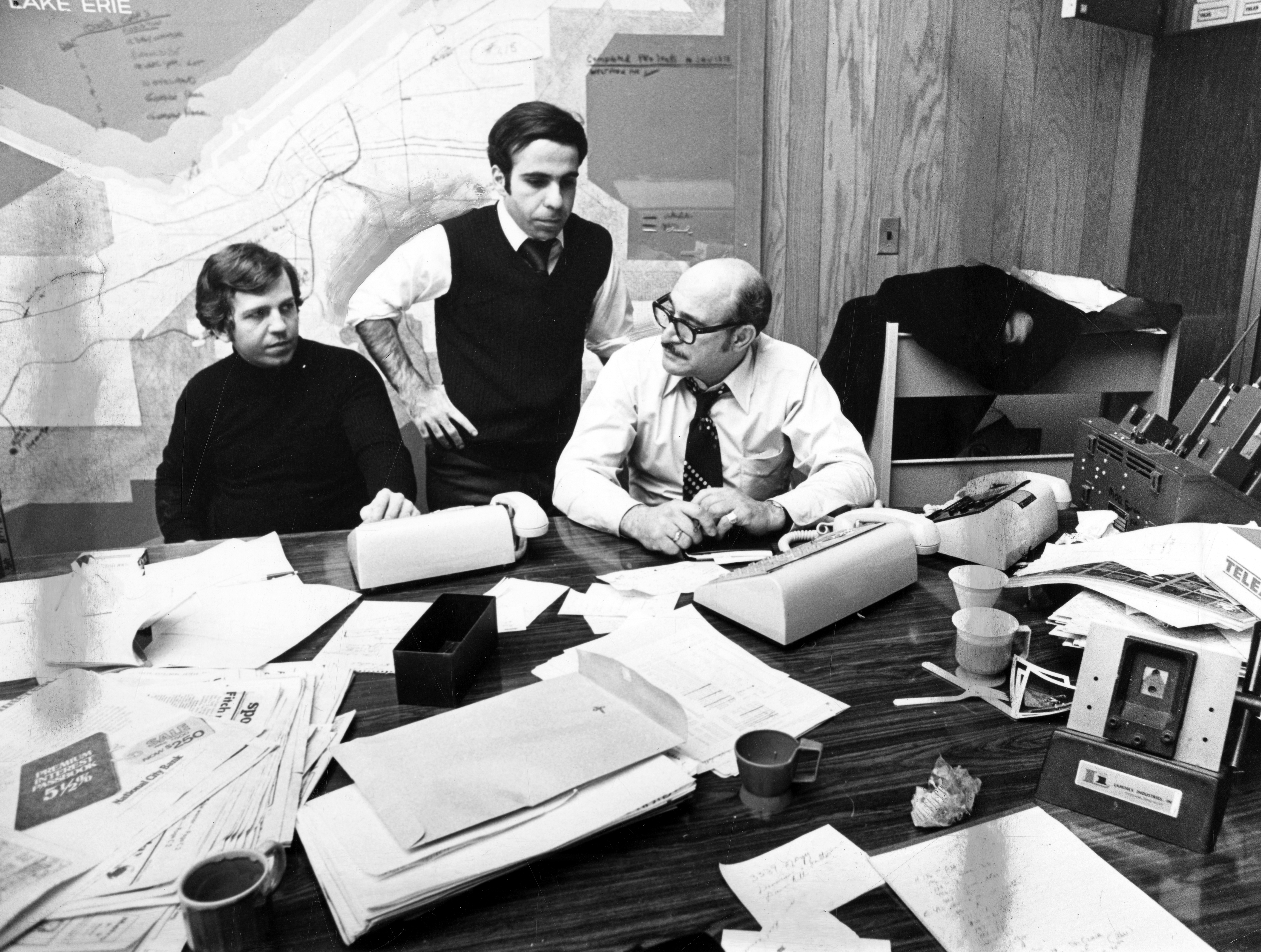
Steve Gladis departed his house for his usual run at about 4:30 a.m. To him, it was a morning like any other.
Gladis, an FBI agent, ran to calm his wandering brain. He began running during his training, at the FBI language school in sunny Monterey, California. After he was assigned to the bank robbery squad in Cleveland in 1975, he kept on running. He decided to train for the Boston Marathon and even co-founded the Cleveland West Road Runners Club in April 1977, which to this day gives out an award in his name. Running was handy for exercise, but it was good for work too: “My greatest dream was that some guy would start running from us and I was just going to let him run,” he says. “Because I can run forever.”
To squeeze his training into his busy FBI schedule, Gladis ran to work. Every weekday, sleet or slush or sun, he strode roughly 11 miles from his home in Bay Village to the Anthony J. Celebrezze Federal Building. He even found a place to clean himself up, in an unused janitorial shower in the basement.
When he left for one of those morning runs on Jan. 26, Gladis
departed his house on Humiston Drive and turned onto Lake Road. It was freezing cold and snowing as he ran, but that was not so different than other mornings. Snow had been on the ground constantly since November. What was another storm?
But as Gladis jogged east on Lake Road, passing into Rocky River, and then cut briefly south and then east again onto Detroit Avenue, it dawned on him that the snowstorm he was running through was far from ordinary. “Like an explosion, it happened all at once,” says Gladis. “It went from nothing to a blizzard. It was like a Hollywood thing, like someone said ‘Bring in the snow, turn on the fans.’ ”
The wheels of cars on the road beside him were spinning in the fresh snowfall, and an increasingly strong wind blew at his back. After a few miles, he thought about turning back home, but then decided that running into that wind, wind that felt like it was accelerating him to positively Olympic speeds, would be impossible. “Cars are getting stuck and I’m running like a banshee,” Gladis says. “I’m looking like an idiot, running out here in this stuff. Truth be told, if I’d known what was happening, I wouldn’t have done this.”
The wind propelled him along so fast that by mile five or so, Gladis even seemed to get ahead of the bulk of the storm. For a moment, the air around him snapped from freezing to what felt like a balmy 40 degrees. “It was like summer in January,” he says. “It was amazing.”
This was a fickle and fast-moving storm. It had formed from two weather systems, a storm from the Gulf of Mexico and cold air screaming in from the Great Plains, which hurled against each other, swirling in a brutal tussle over the Ohio River Valley, and then moved over Lake Erie. The barometric pressure, a low value of which indicates a bad storm, had already hit record lows. By the morning of Jan. 26, around the time of Gladis’ run, one meter in Cleveland read 28.28 inches. According to Kent State geography professor Thomas Schmidlin’s history of Ohio severe weather events, Thunder in the Heartland, it was at the time the lowest ever recorded in the state. Similarly low readings were recorded in Cincinnati, Columbus, Youngstown and Toledo. Temperatures in Cleveland dropped by 39 degrees in only six hours. Ohio was being buried.
Gladis was too. By the time he reached downtown, at around 6 a.m, he guessed that six or so fresh inches of snow had fallen, and it was still coming down. He resembled a lost Arctic explorer. Frost nipped at his extremities. Even his sweat had frozen. “By the time I got into work, I had icicles coming off my head,” Gladis says.
He was so unkempt that his FBI coworkers at first didn’t recognize him. Gladis had to flash his badge to get into the building. He already had a reputation as the office eccentric, and the skeptical agents couldn’t believe he’d run all that way by accident.
“The night supervisor was in there and he said, ‘How did you get here?’ I said, ‘I ran’ and he said ‘Bullshit!’ ” recalls Gladis. “They thought I was crazy. And I knew: this is just going to perpetuate the myth.”
After showering and dressing, Gladis fielded a phone call from a Cleveland Press reporter. His story of accidentally running through a blizzard became front page news. On the WEWS show Morning Exchange several days later, which was filmed outside, the producers had him jog onto the set to the Rocky theme song. But that morning, Gladis just wanted to get through the day. When the Press reporter asked how he’d gotten downtown in a blizzard, he only shared the story because he knew the reporter through the running community.
“I didn’t mean to do it. I wouldn’t do it again,” Gladis told the reporter. “The wind just took me.”
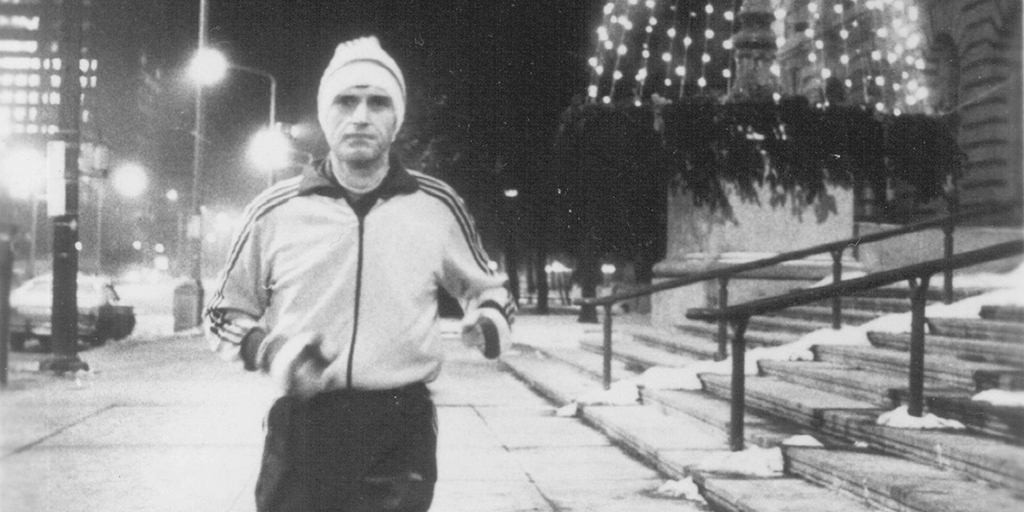
The storm raged for the rest of the day, and Tegreene watched it from a command post set up in City Hall. The table and the walls of the press office conference room were plastered with maps of the city. Phone lines buzzed as staffers called in reports. Kucinich called often from Washington. He had tried and failed to charter an airplane home. Other than the phones, however, City Hall was oddly hushed. Few workers had made it in. Tegreene and his small team studied the maps and commanded plow crews to work on the main arteries. But the storm was still slamming the city, which made plowing futile. “The frustration that day was there was just very little we could do,” says Tegreene.
The wind continued to whip and pound. By 9:30 a.m. the Cleveland Press wind gauge had measured gusts of 85 miles per hour and a temperature of 8 degrees. The gusts cracked two panes on Terminal Tower, broke a revolving door on the federal building and blew in the 8-by-14 foot windows of the penthouse of the Carlyle apartment tower in Lakewood, leaving two inches of snow in the living room.
Power lines were knocked out, cutting service to more than 100,000 houses and businesses. Cleveland Electrical Illuminating Co. dispatched 1,000 workers to fix them. Schools across the region were closed. The Common Pleas court closed too, as did the county government building. Only seven or eight treasurer’s office employees showed up for work. Classes were called off at Cleveland State University and Case Western Reserve University, in the latter case for the first time since the Great Thanksgiving Blizzard of 1950. Downtown office workers, too scared to make the drive home the prior evening, had booked the city’s hotels to capacity.
The highways slowed to a crawl and then closed altogether. The Ohio Turnpike shut down for the first time in its history. Gov. James A. Rhodes called up the Ohio National Guard, who roamed the highways in their combat vehicles. Kucinich called them into Cleveland, and they began digging out stranded motorists along Interstate-71 and I-271. Roads were impassable even to delivery trucks. The United States Postal Service called off mail deliveries. In supermarkets, there were shortages of bread and milk, and supermarket officials cautioned the public not to clear the shelves in a panic.
A man named Jim Truly, a truck driver, was snowed into his cab on the highway outside Mansfield, stuck under a 20-foot drift. He lived on cigarettes and melted snow for five days before the National Guard and his brother Don located him. “I never gave up,” he said a year later.
The Cleveland Hopkins International Airport and Burke Lakefront Airport were shut down too. At the Akron Municipal Airport, winds flipped a small plane completely upside down. All flights were canceled. Cleveland Press real estate editor Bob Brennan, traveling home with a group of Cleveland-area homebuilders from a conference in Dallas, was stranded at the airport in Louisville, Kentucky, which was also getting slammed by the storm. Some members of his party tried to rent cars to drive home, then returned them when they couldn’t even get out of the airport.
The only people flying were the National Guard in their helicopters, who ferried medical cases and staff to hospitals. Greyhound buses stopped running, and the Red Cross set up cots for passengers in Greyhound’s Chester Avenue terminal. Several travelers, as well as families without heat, camped out in City Hall. A band of kindly Hare Krishnas provided them with health food and ample literature.
Even Lake Erie was frozen over. Coast Guard icebreakers had spent the days before the storm chopping through the ice to guide ships into safe harbor, but the J. Burton Ayers, laden with iron ore pellets bound for the steel mills of Cleveland, was stranded in the Pelee Passage about 50 miles northwest of the city. The ship’s crew of 31 passed the time watching TV, playing cribbage and reading. They survived on rations of one square meal a day, and milk and cigarettes airlifted by the Coast Guard. The wind whistled outside at speeds of up to 111 miles per hour. In all his 24 years of sailing, “I’ve never seen anything quite like this before,” Captain Delmar Webster told The Associated Press via radio. To get from his cabin to the bridge without being blown overboard, he crawled on his hands and knees.
Most conventional forms of transport were useless, so first responders dragooned snowmobiles. One group of stranded drivers in Geauga County grew so desperate that they broke into a new but still vacant home to use the phone. They were rescued by sheriff’s deputies, who growled up on snowmobiles.
The cold’s icy fingers stretched from cradle to grave. Elsewhere in Geauga County, first responders on snowmobiles transported three pregnant women to Geauga Community Hospital. Meanwhile, Cleveland’s cemeteries delayed burials. The earth was so frozen it would break their backhoes.
In Lake County, where the cooling towers of the Perry Nuclear Power Plant were under construction, 70 mile-per-hour winds toppled a 200-foot-tall crane. In Leroy Township, a truck loaded with 15,000 gallons of milk slid off the road. It leaked, creating what newspapers called “the largest ice cream cone in history.”
For entertainment, snowed-in Clevelanders turned to favorite pastimes: baking, reading, watching television, listening to the radio. The Cleveland Cavaliers’ Thursday night game in Richfield was called off, marking the team’s fourth snow-out of the season, the most in the NBA that year, so the television stations ran wall-to-wall coverage of the blizzard. A Bette Midler show at the Front Row Theater was canceled too. Instead, the musical theater legend vamped for a merry band of residents at her hotel.
On WMMS The Buzzard, the DJs made their song selections into a gag on the highs and lows of the whiteout, alternating between summery tunes like “California Dreaming” by The Mamas & the Papas and dark commentaries like Alice Cooper’s “Welcome To My Nightmare.” But the most resonant song echoing over WMMS’s airwaves was probably REO Speedwagon’s “Ridin’ the Storm Out”:
“Ridin’ the storm out, waitin’ for the thaw out
On a full moon night in the Rocky Mountain winter.
My wine bottle’s low, watching for the snow
I’ve been thinking lately of what I’m missing in the city.
And I’m not missing a thing
Watchin’ the full moon crossing the range
Ridin’ the storm out
Ridin’ the storm out.”
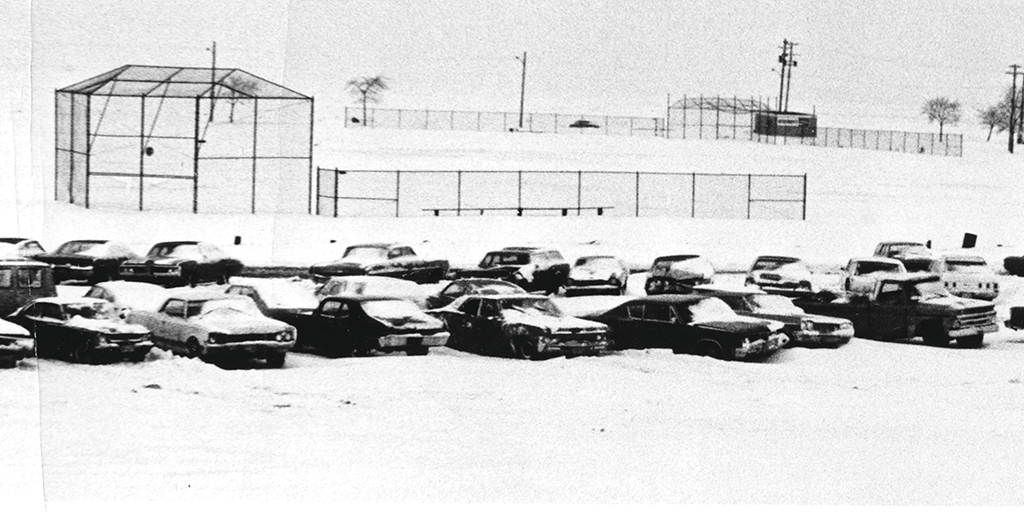
Cleveland Press delivery boy John Catalano received his bundle of papers from the delivery truck three hours later than usual. The afternoon paper’s front page on Jan. 26 blared the news that was by now obvious: “BLIZZARD SMASHES AREA.”
Around 6 p.m., 13-year-old Catalano packed up his papers, put on two pairs of socks and his calfskin boots, and layered his coats. When the weather was nice and he could ride his bike, Catalano could get done with the roughly 2.5-mile route of about 65 subscribers along Riverview and Chippewa roads in Brecksville in about an hour and a half. On snowy days, his mother or father would normally drive him. But today was a workday for his dad, a freelance snowplow operator, so Catalano set off on foot. “I got the bundle, and I just started delivering,” he says.
It was a slow trudge through the tall snowbanks and brutal wind. Catalano’s neighborhood, on the outskirts of what is now the Cuyahoga Valley National Park, was dotted with modest suburban ranches amid groves of trees, all coated in snow. The houses had long driveways, and Catalano picked his way along Riverview Road to each one, delivering as he went.
It was dark, and getting darker with each passing hour. By the time he made his deliveries and reached the small hill at the end of Riverview Road, it was fully night. He then turned around, and huffed and puffed back up the street, delivering to the houses on the other side. Other than the distant lights of the houses and a county engineer’s snowplow, he didn’t see another soul.
Along the way, he came across a snowdrift at the end of a driveway. Three animal bodies rested atop it. As he got closer, he saw that they were feral cats, frozen to death. “They were trying to survive,” says Catalano. “But with the extreme, stone-cold winds, they unfortunately didn’t survive.”
When Catalano finally emerged from the cold and inky night, his mother was waiting at the door. It was just before 1 a.m. Catalano had been gone for about six hours, and his mother had proceeded through all the stages of parental agony, from concern to worry to panic to relief. “She was terrified,” says Catalano. “She thought I got frostbite or hit by a car or, God forbid, worse.”
As his mother went into the kitchen to fix him a late dinner, Catalano peeled off his boots and coats and socks. Later, he would get a special certificate from the Press for braving the elements. But in that moment, nothing compared to what he found in the living room: a gigantic fire, crackling in the fireplace. Catalano’s mother brought him a grilled cheese and what surely was the world’s biggest bowl of tomato soup. He ate it and let the warmth course through him, inside and out.
At about 2 a.m. in the morning on Jan. 27, Tegreene finally laid down on a couch in the mayor’s office. Tegreene and the city staff had spent all day marshaling plows around the city, and, at Kucinich’s insistence, opening the city’s generator-heated recreation centers for more than 1,000 people. But the wind was still whipping around. He had barely been asleep a half hour when a secretary woke him to take another call from Kucinich, who was still stranded in Washington, then he drifted finally to sleep. More than 24 hours had passed since the storm first shook his apartment window.
He woke at 6 a.m., cleaned up in a shower that former mayor Ralph Perk had installed in the mayor’s private bathroom, dressed in the same shirt, slacks and sweater vest he’d worn the day before, and returned to the command center. Today, he was sure, would go better. “I recall there may have even actually been sun on the second day,” says Tegreene. “We could settle in and just get stuff taken care of.”
The worst of the storm had passed, even as most schools remained closed and 25,000 Cleveland-area homes and businesses were still without power. The cleanup began in earnest. Temperatures were still well below freezing as city plows headed out again. The high was 19 degrees, and the low was 7. City Hall staff were still fielding complaints from residents over unplowed roads, but most main thoroughfares were being slowly opened, even as an unexpected obstacle was slowing the cleanup.
Cleveland was then a city of some 575,000 people, many of whom left their cars parked on the street. Those cars, including some that were abandoned, were now buried under mounds of snow, blocking the plows. City crews dug them out and towed them one by one, collecting more than 1,000 in eight lots, including one at Edgewater Park. “It took a good week to get back to normal,” says Tegreene.
But by noon, the department stores downtown, Higbee’s, Halle Brothers and May Co., had all opened up again. To Tegreene’s relief, the wind had died down enough that the salt was finally sticking to the roads as well, and by day’s end, he could finally make it back to his apartment. Thirty-six hours had passed since Tegreene had last seen his bed. He collapsed immediately into it, bringing his stint as Cleveland’s “acting mayor” to an end.
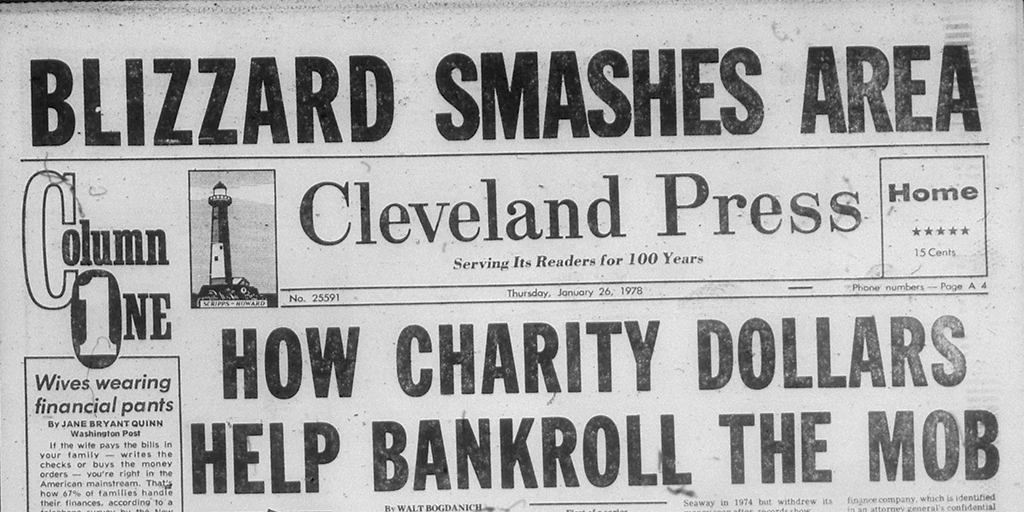
Early in the morning of Jan. 26, Jim Kenzig hauled himself out of bed and walked nearly two miles, through the blizzard, to Fairview High School. He got to the door and gave it a tug before he realized school was closed. With nothing to do that day or the next, Kenzig got to thinking about camping.
Sixteen-year-old Kenzig was a Boy Scout, through Boy Scout Troop 225 in Westlake. The troop was very active, and went camping all the time. “We tried to go every month, and we went in November, and all the months through the summer,” says Kenzig. “That was our thing.”
But one badge had eluded Troop 225: the Polar Bear, given to scouts who camp out for 24 hours in temperatures below 32 degrees. Jan. 27 was the day, the troop decided, to get their Polar Bears.
Around 6 p.m., Troop 225 gathered around their van in the parking lot of St. Bernadette’s. Kenzig had packed the bare essentials: a warm coat, a hat and gloves, a sleeping bag, matches, a pocketknife, an axe and two pairs of socks. “My scoutmaster used to always say to bring extra, because you can always put them on but you can’t take them off,” says Kenzig. He piled his gear into the back of the scout troop’s van with the other seven campers. The van set out over snowy roads for Camp Belden, a wilderness area outside Grafton.
It was dark and freezing cold when the scouts got there and hiked out into the woods. They started to make shelters to ward off the cold. Kenzig found a pine tree with a branch sticking straight out. The ground was dry beneath it. He cut off other branches and leaned them against the big horizontal one, making an ovular tent, rich with the scent of pine. “It was just branches, all the way around,” says Kenzig.
To keep warm, Kenzig built a fire outside, which he started in true Scout fashion: rubbing two sticks together. But as it got late and the wind through the trees hadn’t let up, he bedded down. Years later, Kenzig learned that several other scouts had spent the night in the van. But he climbed into his sleeping bag inside the tree-tent.
There were 18 inches of snow on the ground that night, according to the meter at Cleveland Hopkins airport, and much of it had been blown this way and that, creating even taller drifts. Two inches more fell on Jan. 30. That snow stuck around for over a month, as temperatures stayed below freezing. It slowly melted away, to 10 inches on Feb. 10, 4 inches on March 1 and zero on March 15.
By the time the snow disappeared, the Jan. 26-27 storm had come to be known as the Great Blizzard of 1978. As of this writing, none has yet matched it in sheer severity. Across Ohio, it was blamed for 51 deaths.
But for those who lived through it, the blizzard is still alive in their minds. “It was a once-in-a-lifetime experience,” says Tegreene, who went on to be an attorney. Catalano is retired. So is Kenzig, who earned his Polar Bear badge the hard way. It is still sewn into his old Boy Scout uniform.
The next morning, Kenzig would wake and find that more snow had sprinkled down. But that night, outside Kenzig’s makeshift shelter, as the freezing wind whistled on outside, swaying the branches, the worst of the storm was already passing into memory.
It was warm and friendly beneath the pine, even comfortable, and Kenzig fell into a deep sleep.
For more updates about Cleveland, sign up for our Cleveland Magazine Daily newsletter, delivered to your inbox six times a week.
Cleveland Magazine is also available in print, publishing 12 times a year with immersive features, helpful guides and beautiful photography and design.
Trending
-
1
-
2
-
3
-
4
-
5

